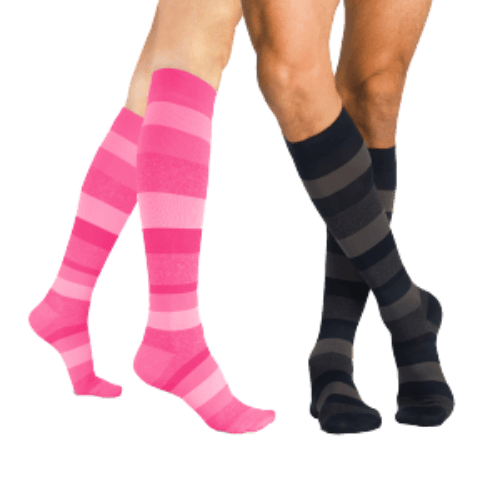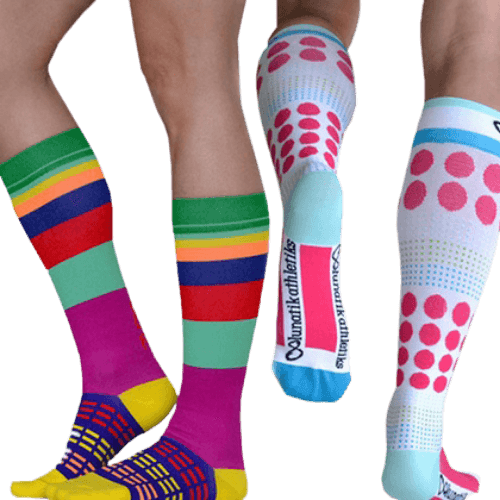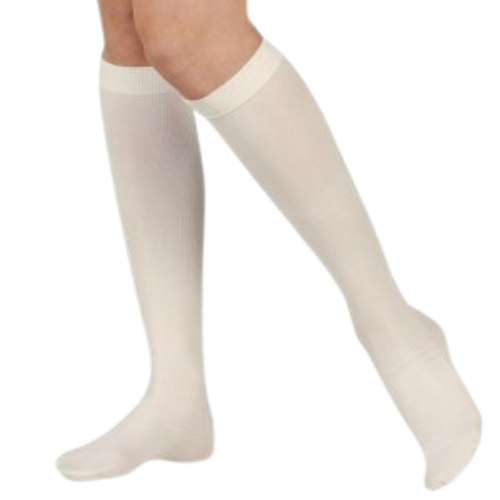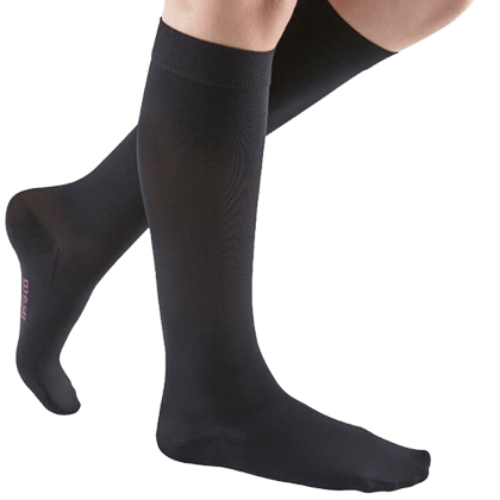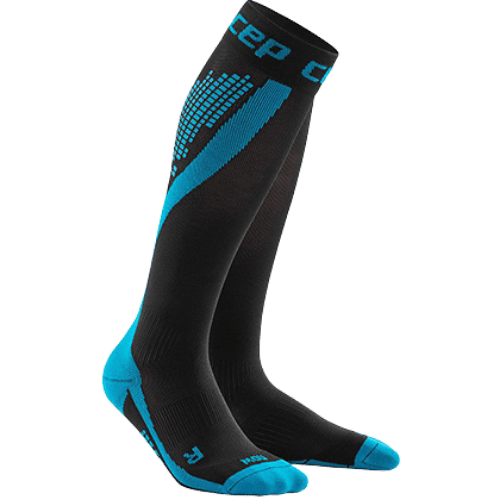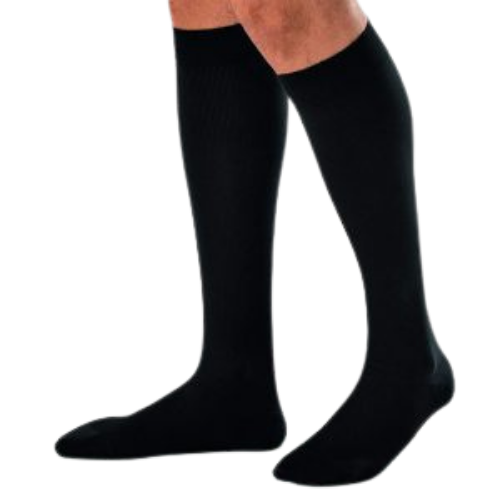About Compression Socks & Legwear
During this challenging time our clinic and staff have taken extra steps to ensure our clients can continue to enjoy the benefits of compression socks and stockings by providing safe in-person fittings or contactless initial fittings and renewals by telehealth, virtual, email and phone consultations. We offer quick and safe pick up or free shipping on qualified orders. Filling your compression sock and stocking order has never been easier. Whether you are interested in compression socks for the first time or are looking for a new or replacement pair, or renewal of a prescription order, we have professional fitters ready to help fit you with some of the best compression socks in Toronto including Sigvaris, Juzo, Achi, Medi, Jobst and CEP.
Compression socks, stockings and legwear provide an effective, practical, and yes, fashionable solution for the management of a wide range of leg symptoms. Compression stockings are designed for all levels of need from low compression (8 – 12 mmHg) using skin friendly material for management of diabetes, mild compression (10-20 mmHg) otherwise know as over-the-counter or OTC for those interested in prevention and promoting good leg health and moderate to high compression (20-30 mmHg or higher), referred to as Medical Compression, for people looking for solutions to reducing symptoms from mild to severe venous conditions.
Compression stockings are designed to improve blood flow, prevent swelling, increase comfort, and relieve tired and achy legs from long hours standing or sitting. Compression socks help manage moderate to severe varicose veins and edema and prevent and manage other complications from poor circulation.
At the Dundas University Health Clinic, we understand the needs of our clients and patients and have sourced a wide selection of the best brands and styles to make wearing compression an expression of wellness, fashion, function, and style.
A medical prescription is recommended for compression socks and stockings with compression levels of 20 mmHg and higher and is required for reimbursement from most extended health care insurance providers.
Juzo, Jobst, Lunatik athletics, Medi (Mediven), CEP compression, and Sigvaris brand stockings are professionally fitted and dispensed on-site by a trained and registered compression stocking fitter. Appointments are recommended.
Frequently Asked Questions About Compression Socks
Length, fit, and compression level, measured in millimeters of mercury (the same scale used to measure your blood pressure), provide for a large range of compression socks and styles available. Some lower compression level socks (less than 20 mmHg) are available to purchase over the counter without the need for assistance, while higher level compression socks (20 mmHg and higher) with targeted treatment goals in mind, are best fitted by an experienced registered fitter and are available by prescription from Dundas University Health Clinic. Compression socks typically come in three lengths: Knee-high, thigh-high and pantyhose with some variations including full compression tights, performance sleeves and medical wraps. Custom-fit medical compression socks and stockings are also available.
View options from:

